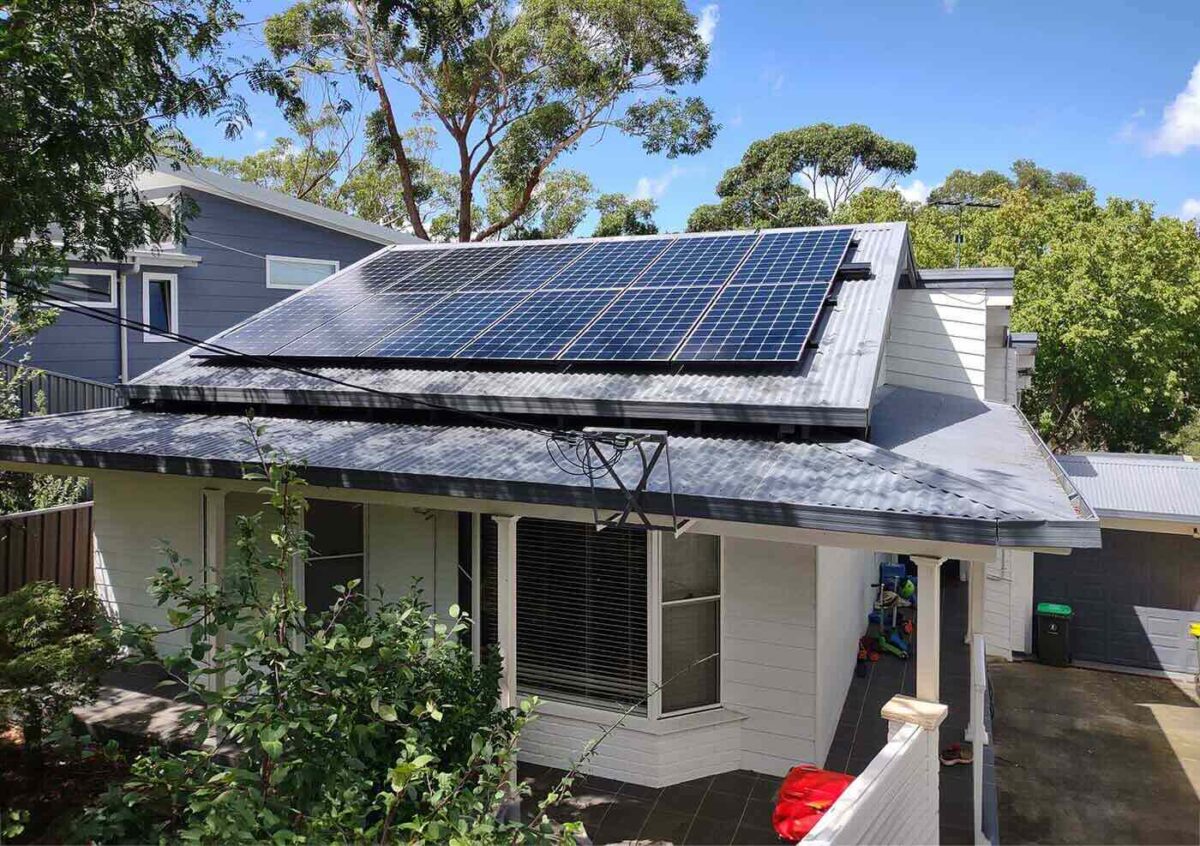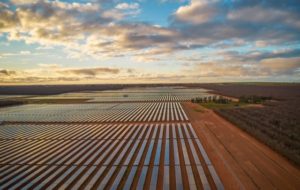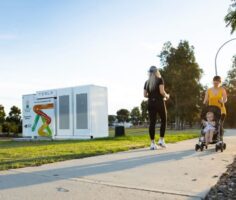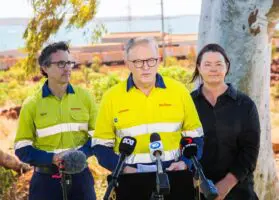Two years ago, in the southern Sydney suburb of Oyster Bay, Brody Kenrick embarked on a journey to not just make his late 60s house carbon neutral, but carbon negative. He wanted to make sure his own house had zero carbon emissions and also displace emissions from the grid.
“Our intent was also the displacement of other people’s use of fossil fuels,” says Kenrick. “We always intended to generate more energy than we needed because I don’t believe in carbon offsets. Carbon offsets are just marketing lies.”
“I decided to go all in. As some of my mates would say, ‘do a Brody on this thing.’”
If they were going to claim to be carbon negative though, Kenrick says “we needed to do something that we could prove was more useful than ticking a box or sending $50 to some offset ‘factories’ in a developing country, or a promise from someone not to burn down trees in Canada.”
Kenrick wanted his house to be a proof of concept, to be an example of what can be achieved if you have the extra capital and inclination to do it, and he admits that he and his wife were fortunate enough to have the upfront capital for their energy upgrade and full electrification.
“Our goal was to do the right thing by the planet, that morally and ethically we should do something because we can. I strongly believe that as a family living in a first world country, we have common, but differentiated, responsibilities.”
Kenrick believes many of the upgrades they did could be achieved by other people, if they have the capital to invest, but he admits being a trained electrical engineer and tech savvy has been an advantage. He currently works as the head of engineering in a data analytics company.
They started the upgrade of their late 60s house, that Kenrick says was “little more than a tent,” by installing insulation in the roof and knocking holes in all the walls to install high quality insulation.
Then they went big on solar, installing 18.6 kw of solar panels. The average Australian install is now about 10kw.
“We knew how much power we would be using. Covering the roof with solar was probably our best bet because solar panels themselves are pretty cheap, so having an oversupply was a good idea because we wanted to cover all of our usage.”
They also bought an EV, the Hyundai Ioniq 5 and installed a 22kw EV charger. “One of the things people don’t quite get is how much energy electric cars need.”
Then they installed two 13.5 kwH Tesla powerwalls. “We got more batteries than the house needed knowing that there are going to be times when we could take our green energy and pump it back into the grid.”
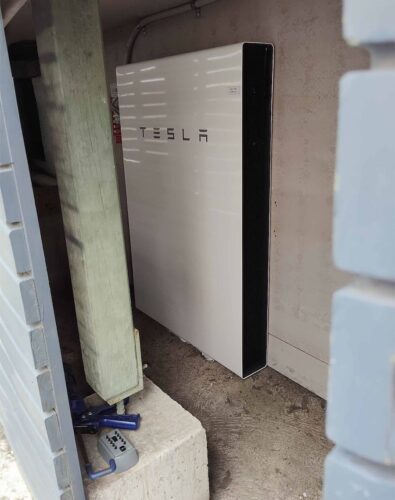
Every night – “the dirtiest time on the grid” – the Kenricks export clean power generated from their solar into the grid from their batteries, and through real time tracking know exactly how much fossil fuel emissions they’re displacing, usually about 600 gms per kilowatt hour.
“We’ve got so much electricity that we’re literally throwing it away some of the time, practically giving it away other times,” says Kenrick. “This is the future of energy abundance that we all will experience some time.”


Over the last two winters the Kenricks have installed air conditioners in all the bedrooms, for both heating and cooling, double glazed all the windows, and triple glazed the boys’ bedroom.
“If we didn’t do those things, then we’d probably tap out our battery every night during winter instead of being able to sell back to the grid.”
They also bought a smart hot water heat pump system which is integrated into the home energy management system and “does a whole bunch of tricks to use much less energy. Without all these different tricks, we wouldn’t be as carbon negative as we are.”
One of the tricks they use is not heating the water to the same temperature as a normal hot water system so they can save on power and electricity.
“Most people set their hot water to 60 or 65 degrees. Ours is actually set lower, to the minimum level that avoids bacterial infection.” Then once a week the Kenricks do a 70 degree sanitation run with the heat pump to ensure there’s no bacteria.
“All of which means that rather than using 30 kilowatt hours in any given week we use about 12.”
Kenrick also uses an open-source software home energy management system to coordinate and integrate all their electrical devices, called Home Assistant.
“It makes good decisions on when to use our own electricity, when to charge the car, when to send stuff back to the grid.”
Kenrick also signed up with Amber energy which provides consumers direct access to real-time data, and charges wholesale energy prices for a flat monthly fee. But he admits he had to use his electrical and tech know-how to make the house truly ‘smart’.
“I had to convince manufacturers of hardware to support a certain interface, or sometimes I worked with other people in the public domain, in an open-source community, to make sure things were a little bit more accessible or a bit more useful.”
One of the issues he had to overcome was an integration problem with his Enphase inverters.
In the middle of the day in summer solar owners are often penalised if they export their solar power into the grid. This was a disincentive for Kenrick – he wanted to be able to automatically shut down his inverter so he wouldn’t be charged for exporting at such times.
But the Version 7 Enphase inverters he installed only had a manual switch on the inverter box located on the outside of the house.
“There is the ability to go out there and press a button to turn off your arrays or to export limit them, and so lots of people go outside and turn off their array. But that doesn’t sync well with me.”
So Kenrick wrote some code that would enable him to export-limit the house and not waste money in the middle of summer.
“We’ll happily pay for one or two cents per negative kw but if it goes to minus 5,6,7, 15 cents, then we just turn things off automatically.”

And the upfront cost?
Kenrick admits the hardware they chose was expensive. Their 2 Tesla powerwall batteries, solar panels, the car charger and monitoring system, cost about $37,000.
The Hyundai Ioniq 5 cost $70,000, but Kenrick says that was only about $10,000 more than what they would have spent on an equivalent internal combustion engine car.
The insulation was about $4000, and they also put on external shades to cut down the direct sun which cost about $2000.
The hot water heat pump, an EvoHeat Evo270 litre, cost $3500.
They also spent $9000 on an electric bike which they use to take the boys to school. Kenrick particularly likes not having to join a queue of cars for school pickup – they can dodge the cars and do it with zero emissions.
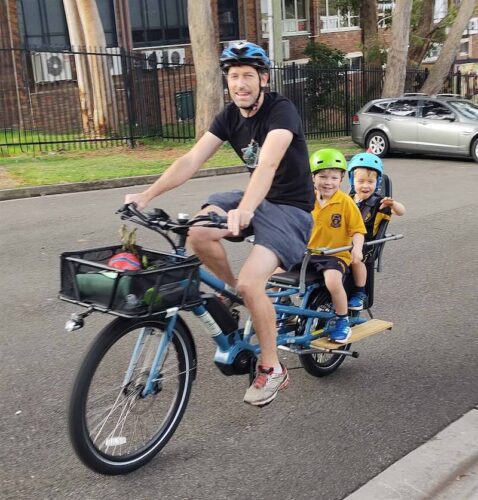
All the power tools around the house are also now electric. They have a pool pump and have invested in a separate heat pump to heat the pool which cost around $3500, which Kenrick maintains is “stupidly efficient.”
But since doing the energy upgrade the Kenricks have been paid nearly $5000 for the electricity they have exported into the grid.
They’ve also avoided the outgoings of running an internal combustion engine car. Kenrick estimates they’ve saved about $11-13,000 on petrol and electricity over the last 2 years.
If you take out insulation and other things they did more for comfort “this whole little endeavour will probably pay back within seven years. That’s a relatively good investment.”
Taking it to school
Word about Kenrick’s home energy upgrade has spread in the local community. The director of his son’s preschool was keen to tap into his knowledge to make the school carbon neutral.
“It’s a simplified version of what we do at home,” says Kenrick. “We bought all of the right hardware so that Amber could control the buying and selling [so they could buy low and sell high]”.
“The preschool didn’t want to be saddled with having to understand how the system works. They just wanted to know that they’re carbon negative.” So Kenrick has set the system to allow Amber to control when and for how long the school’s battery discharges into the grid.
They also opted not to invest in premium hardware, but “inexpensive, solid, not premium, but best of the rest products [Trina solar panels, and Sungrow inverters and batteries], because Amber works well with Sungrow.”
It cost about $21,000 to fit out the preschool with 13 kw of solar and a 16kwH battery, and Kenrick estimates the pay back on the hardware will be about 5 years.
Kenrick acknowledges that many people are distrustful of power companies and understandably reluctant to hand over control of their energy resources.
“If you’ve got a monopoly underlying things and put a pretend market competition on top of it, weird things are gonna happen,” he says. “It’s not true competition, it’s just marketing.”
But he says companies like Amber are taking the marketing and retailing out of the picture. “They’re not trying to make you use more energy to make them more money.”
Choosing companies like Amber means going face to face with the ups and downs of the wholesale electricity market, but Kenrick argues this gives consumers a much better deal on electricity prices.
“You’re not being screwed by a retailer … and you see how cheap wholesale power is now.”
“But you can only do it if you can avoid the biggest risks of being exposed to the wholesale market,” says Kenrick. “The safest way to avoid the risks is to put in enough storage [batteries] so you won’t need to ever pay the highest rate of electricity.”
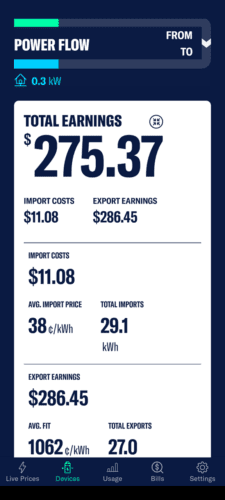
Proof of concept for friends and family
Since outfitting the preschool, Kenrick has used a similar set-up to upgrade his parents’ and mother-in-laws’ houses. A few of his mates have also copied the same set-up.
“For around a $20,000 price point you can move yourself away from being a carbon problem to being part of the carbon solution.”
“You can move away from silly old retailers and move to something that’s a bit more in line with the reality of the renewables transition and the real costs of energy in the grid”.
Whilst Kenrick and his family have gone carbon negative voluntarily because they wanted to be examples for other people to see what’s possible, they would like to see better regulations and policies to assist people make the transition.
“It’d be nice if there were better building requirements on future houses that people didn’t have to think so hard about.”
This article was originally published on our sister website SwitchedOn.

